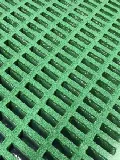loading...
- No. 9, Xingyuan South Street, Dongwaihuan Road, Zaoqiang County, Hengshui, Hebei, China
- admin@zjcomposites.com
- +86 15097380338
- Welcome to visit our website!
Utilizing FRP Bars for Enhanced Concrete Reinforcement in Construction Applications
The Role of FRP Bars in Concrete Structures
Fiber Reinforced Polymer (FRP) bars have emerged as a revolutionary solution in the field of construction and civil engineering. Their application in concrete structures has garnered significant attention due to their impressive mechanical properties, durability, and resistance to environmental factors. This article delves into the characteristics, advantages, and applications of FRP bars in concrete, highlighting their transformative impact on modern construction practices.
Understanding FRP Bars
FRP bars are made from a combination of fiber materials, such as carbon, glass, or aramid, combined with a polymer matrix. The resulting composite is lightweight, yet strong, offering excellent tensile strength. Unlike traditional steel reinforcement, FRP bars do not corrode, making them particularly advantageous in harsh environments where concrete structures are exposed to moisture, salts, or chemicals.
The manufacturing process of FRP bars allows for the tailoring of properties to meet specific engineering requirements. For instance, the type and orientation of fibers can be adjusted to enhance strength in particular directions, making FRP bars suitable for various applications in concrete reinforcement.
Advantages of FRP Bars
1. Corrosion Resistance One of the most significant benefits of FRP bars is their resistance to corrosion. In environments where steel reinforcement would rust and weaken the structure, FRP bars maintain their integrity over time, prolonging the lifespan of concrete structures.
2. Lightweight FRP bars are much lighter than traditional steel reinforcement, making them easier to handle and transport. This can lead to reductions in labor costs and time during construction.
3. High Strength-to-Weight Ratio Despite being lightweight, FRP bars exhibit high tensile strength. This means that less material can achieve the same reinforcing effect as steel bars, contributing to more efficient design.
4. Non-Magnetic and Non-Electric FRP bars do not conduct electricity or magnetism, which makes them suitable for use in structures that require electromagnetically insensitive materials, such as in certain nuclear facilities or MRI rooms.
5. Versatility in Design The properties of FRP bars can be customized, allowing for innovative design solutions. Engineers can choose the type of fiber, matrix, and shape of the bars to tailor them to the specific loading and environmental conditions they will face.
frp bars in concrete

Applications of FRP Bars in Concrete
The use of FRP bars in concrete has seen a consistent increase in various applications, including
- Bridge Construction FRP bars are ideal for reinforcing bridge decks and substructures, particularly in regions where de-icing salts may pose a risk of corrosion.
- Coastal Structures Structures built near coastlines, such as seawalls and piers, benefit from the corrosion resistance of FRP bars against saltwater.
- Highway and Transportation Infrastructure FRP is increasingly being used in the construction of roads, pavements, and railings due to its lightweight nature and durability.
- Marine Applications FRP bars are utilized in marine environments where traditional materials would quickly degrade due to exposure to water, making them an optimal choice for docks or underwater structures.
- Rehabilitative Projects Existing structures that require reinforcement or retrofitting often utilize FRP bars as they can be integrated without adding significant weight.
Conclusion
As the construction industry continues to evolve, the importance of advanced materials like FRP bars becomes increasingly evident. Their unique properties, including corrosion resistance, lightweight nature, and high strength-to-weight ratio, make them an ideal solution for reinforcing concrete structures, particularly in challenging environments. With ongoing research and development, the potential for FRP bars in innovative construction projects is limitless. By embracing and utilizing these modern materials, engineers can enhance the longevity and safety of concrete structures, paving the way for a more durable and resilient built environment.
In summary, the integration of FRP bars in concrete construction represents a significant advancement, offering practical solutions to prevalent issues associated with traditional materials. As awareness and understanding of FRP technology grow, it is likely to become a standard practice in future construction, reinforcing the need for adaptability in engineering methodologies.
-
GRP Structures: The Future of Lightweight, High-Performance EngineeringNewsJun.20,2025
-
FRP Water Tank: High-Performance Storage for Corrosive and Clean Water SystemsNewsJun.20,2025
-
FRP Square Tube: The New Industry Standard for Chemical and Structural ApplicationsNewsJun.20,2025
-
FRP Pultruded Profiles: The Ultimate Choice for Lightweight Structural StrengthNewsJun.20,2025
-
FRP Handrails: The Safer, Smarter, and Stronger Choice for Modern InfrastructureNewsJun.20,2025
-
FRP Grating: The Smart Solution for Durable, Lightweight Industrial FlooringNewsJun.20,2025
-
Why Choose a Galvanized Water Tank for Your Storage NeedsNewsMay.21,2025
